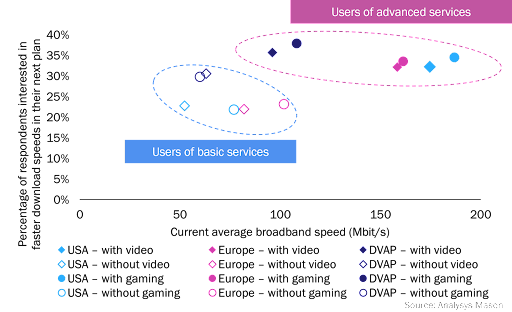
CAPs and ISPs must collaborate for internet growth
A written report from Analysys Mason highlights the need for commercial agreements for CAPs and ISPs.
The COVID-19 pandemic has highlighted the need for internet infrastructure that is resilient and scalable in order to cope with spikes in demand. This has led to a resurgence of the idea that internet content and application providers (CAPs) should pay for the privilege of delivering traffic on internet service providers (ISPs') networks.
In South Korea, interconnection and traffic delivery are left to commercial negotiations between ISPs and CAPs, but in most other places in the world, everyone pays their own costs based on their individual incentives.
This has led to CAPs constructing their own networks from a combination of owned and rented infrastructure in order to be able to deliver traffic in major cities around the world.
It is estimated that CAPs worldwide invested a total of $883bn in infrastructure between 2011 and 2021. About half of this investment occurred between 2018 and 2021, with investments averaging $120b each year during this period.

These investments have enabled ISPs to save over $5b per year, based on an analysis conducted by Analysys Mason with Netflix in early 2022. The organisation of traffic delivery on the internet has worked well and has supported growth in the scale and scope of online services. The COVID-19 pandemic illustrated the importance of the internet for working, studying and staying connected, as well as the need for internet infrastructure that is resilient and scalable.
The synergies between connectivity and content drive the demand for better connectivity. The results of Analysys Mason's consumer survey show that users of more advanced online services, including streaming and gaming, already subscribe to faster broadband packages than those that do not use such services and are more likely to upgrade their connections to faster speeds when available.
ISPs should focus on making networks work for the next wave of services, such as metavirtual reality (VR) and augmented reality (AR), which will require more bandwidth and lower latencies than the current generation of services. This will enable them to maintain their revenue and support the growth of the next wave of services.
CAPs, on the other hand, should focus on investing in their networks and infrastructure in order to support the growth of the internet. They should also consider collaborating with ISPs in order to ensure that the internet can continue to support the growth of online services. This will require a shift in the way that CAPs and ISPs think about their relationships, but it will ultimately be beneficial for both parties and for end users.

As the demand for better connectivity grows, it is important for both CAPs and ISPs to work together to support the growth of the internet. This will require a shift in the way that they think about their relationships and a focus on collaboration and investment in infrastructure.
One way that CAPs and ISPs can collaborate is by participating in internet exchange points, which are physical locations where networks can interconnect and exchange traffic. These exchange points can help to reduce the cost and improve the quality of traffic delivery, benefiting both parties and their common users.
Another way that CAPs and ISPs can collaborate is by making use of commercial content delivery networks (CDNs) and public cloud services. CDNs can help to distribute content and applications more efficiently, while public cloud services can provide the infrastructure and networking capabilities needed to support the growth of the internet.
Overall, it is clear that there are significant benefits to be gained from the collaboration between CAPs and ISPs. By working together and investing in infrastructure, they can support the growth of the internet and ensure that it continues to provide the connectivity and services relied on daily.
In addition to collaborating with each other, CAPs and ISPs should also focus on investing in their own networks and infrastructure.
For CAPs, this means investing in the infrastructure that is needed to deliver traffic to end users, such as data centres and internet exchange points. It also means making use of CDNs and public cloud services to distribute content and applications more efficiently.
For ISPs, this means investing in the infrastructure that is needed to connect users to the internet, such as fibre optic cables and 5G networks. It also means providing the necessary bandwidth and low latencies to support the next generation of online services, such as metavirtual reality and augmented reality.
This will require a significant amount of investment, but it will ultimately be beneficial for both parties and for end users.















